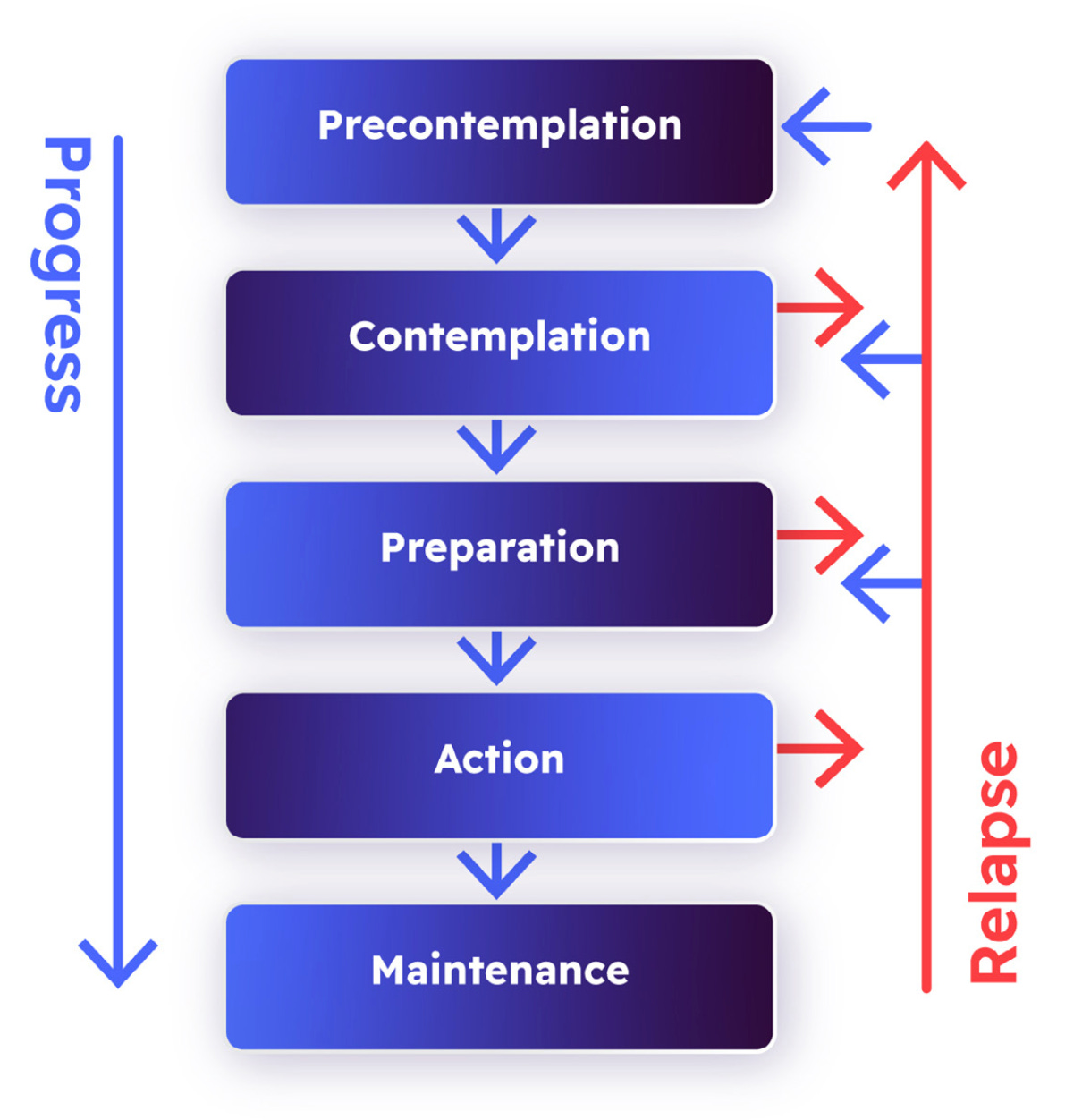Transtheoretical Model (TTM) or Stages of Change Model was created in the second part of the 1970s by Carlo DiClemente and James Prochaska. This paradigm is particularly well-known in the field of health behavior change, although it was originally developed to explain smoking cessation. The Transtheoretical Model (TTM) is an approach to behaviour modification that places emphasis on an individual’s propensity for making positive behavioural changes and offers mechanisms for doing so (change strategies).
The model describes five main stages:
Precontemplation:
At this stage, individuals are not yet acknowledging that there’s a problem behaviour that needs to change. They might be in denial or unaware of
the consequences of their current actions.
Contemplation:
Individuals recognize the problem and start to think about resolving it. However, they are ambivalent about the change and might remain in this stage for a long time, weighing the pros and cons.Preparation:
In this stage, individuals are getting ready to make a change. They might take small steps toward the behaviour change, like setting a quit date for smokingor buying healthier food.
Action:
This is the stage where individuals actively modify their behaviour, experiences, or environment to overcome their problem. It requires considerable commitment, effort, and energy.Maintenance:
Having made the change, the focus now is on sustaining the new behaviour over time and preventing relapse. This stage extends from six months to an indeterminate period past the initial action.
It is significant to highlight that the TTM takes relapses into account, considering the possibility that people could regress to a previous stage. However, each setback offers the opportunity to learn, and the person can utilise that information to help them in their subsequent attempts to improve.
The Transtheoretical Model also defines ten processes of transformation, which are actions people take at different levels to advance. These procedures range from consciousness-raising (increasing awareness) in the preliminary phases to stimulus management (avoiding or repressing events that trigger memories) in the advanced stages.
Understanding the TTM can help change managers get understanding of where people or groups may be in terms of preparedness and acceptance of a certain change.
Organisations may better support and lead their people through transitions by adjusting interventions and messaging based on the precise stage of change.



